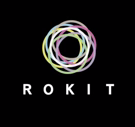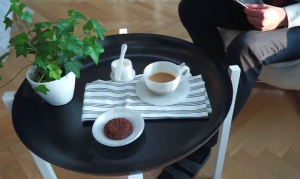 Despite all the benefits that 3D printing provides, there are risks associated with the technology, particularly when printing with plastic. Plastic in general has never been known as the healthiest material; you’ve probably heard warnings about microwaving food in plastic containers or leaving plastic bottles of water in the sun, lest the chemicals in the plastic leach into what you consume. A few years ago, there was an uproar about bisphenol-A (BPA), a chemical commonly found in polycarbonate plastics and epoxy resins, which has been shown to cause endocrine disruption and other potential harmful effects.
Despite all the benefits that 3D printing provides, there are risks associated with the technology, particularly when printing with plastic. Plastic in general has never been known as the healthiest material; you’ve probably heard warnings about microwaving food in plastic containers or leaving plastic bottles of water in the sun, lest the chemicals in the plastic leach into what you consume. A few years ago, there was an uproar about bisphenol-A (BPA), a chemical commonly found in polycarbonate plastics and epoxy resins, which has been shown to cause endocrine disruption and other potential harmful effects.
In terms of safety, 3D printer filament is no different than other plastics. ABS is generally not considered food-safe, and has been found by the EPA to contain carcinogens. While PLA is thought to be a safer option, particularly for printed items that come in contact with food, its actual safety factor has yet to be 100 percent verified. A number of 3D printing companies have been developing food-safe filaments made from materials such as PET or other alternatives, and now South Korean 3D printer manufacturer ROKIT Inc., in conjunction with Kolon Plastics, is releasing what it claims are the world’s first fully non-toxic printer filaments.
ROKIT’s “Kitchen and Deco” filament is BPA-free, and according to the company, fully meets the US Food and Drug Administration’s requirement for materials in contact with food. It emits no carcinogens or endocrine-disrupting chemicals, and ROKIT assures us that it is safe to use for the printing of kitchenware and even baby bottles. The filament retails for $45 per 700g roll.
 “Skinflex,” the second new filament ROKIT is releasing, is geared towards the printing of clothing, accessories, and other materials in close contact with human skin. Retailing at $52 per roll, Skinflex is a flexible elastic material that, like Kitchen and Deco, is free from toxins. It’s also pretty cool and high-tech; users of the filament can use ROKIT’s Creator K software to adjust the final texture and surface technology of the printed object.
“Skinflex,” the second new filament ROKIT is releasing, is geared towards the printing of clothing, accessories, and other materials in close contact with human skin. Retailing at $52 per roll, Skinflex is a flexible elastic material that, like Kitchen and Deco, is free from toxins. It’s also pretty cool and high-tech; users of the filament can use ROKIT’s Creator K software to adjust the final texture and surface technology of the printed object.
At this time, it appears as though ROKIT will continue to offer its standard filament lines in addition to the two new non-toxic ones; it will be interesting to see how the new ones sell in comparison to their traditional PLA, ABS and other plastic filaments. As people are becoming more health-conscious (one may even say health-obsessed), demand for proven safe materials is growing in every sector. We’ve covered a lot of ingenious eco-friendly filaments at 3DPrint.com, but food-safe filaments are still pretty limited. With its new non-toxic options, ROKIT is meeting a major demand in the 3D printing market.
Discuss this story in the ‘Kitchen’ and ‘Deco’ Filament forum thread on 3DPB.com.
https://youtu.be/KRzEs4CBd5Q
Subscribe to Our Email Newsletter
Stay up-to-date on all the latest news from the 3D printing industry and receive information and offers from third party vendors.
You May Also Like
Gorilla Sports GE’s First 3D Printed Titanium Cast
How do you help a gorilla with a broken arm? Sounds like the start of a bad joke a zookeeper might tell, but it’s an actual dilemma recently faced by...
Nylon 3D Printed Parts Made More Functional with Coatings & Colors
Parts 3D printed from polyamide (PA, Nylon) 12 using powder bed fusion (PBF) are a mainstay in the additive manufacturing (AM) industry. While post-finishing processes have improved the porosity of...
$25M to Back Sintavia’s Largest Expansion of Metal 3D Printing Capacity Since 2019
Sintavia, the digital manufacturing company specializing in mission-critical parts for strategic sectors, announced a $25 million investment to increase its production capacity, the largest expansion to its operations since 2019....
Velo3D Initiates Public Offering in a Bid to Strengthen Financial Foundations and Drive Future Growth
Velo3D (NYSE: VLD) has been among a number of publicly traded 3D printing firms that have attempted to weather the current macroeconomic climate. After posting a challenging financial report for 2023,...






























